Everyone chooses his models, his masters, his references. For heaven's sake, I'm not one who goes around telling others how to do it. So you will agree with me that the choice of these references is paradigmatic for describing the people who adopt them. Especially if such models fail right where they claim to be revolutionary.
Now, imagine being at the University of Architecture, and presenting a project with a fantastic, innovative, ingenious program, a captivating, unusual, purist and decisive form... getting all the technical details wrong, so much so that the Technology Reviewer tells you that it can't work. You go straight because you know "what's best" to be a trendsetter, and in fact you get full marks at the exam!
In an ideal world this would lead to an unappealable slam, but in the world of "modern" architecture not!
In an ideal world this would lead to an unappealable slam, but in the world of "modern" architecture not!
Would you drive a car that looks captivating in picture but is actually a damp and drafty tub with brakes that don't work and leaking oil?
Would you wear a dress that looks very comfortable in the catalog but is actually uncomfortable and itchy, perhaps with oversized sleeves?
Would you eat food whose picture on the package has nothing to do with the contents?
Well, believe me, there are some "architects" for whom the habitability and functionality of a building is a totally negligible, secondary, irrelevant, trivial aspect compared to its image. As if "the beauty" were an element of its own, separate from the other features of the building, as if it were a sculpture instead of an architecture. And then there are many normal people who are attracted by these glamorous images, and perhaps in real life then regret a purchase dictated purely by aesthetic criteria.
Would you wear a dress that looks very comfortable in the catalog but is actually uncomfortable and itchy, perhaps with oversized sleeves?
Would you eat food whose picture on the package has nothing to do with the contents?
Well, believe me, there are some "architects" for whom the habitability and functionality of a building is a totally negligible, secondary, irrelevant, trivial aspect compared to its image. As if "the beauty" were an element of its own, separate from the other features of the building, as if it were a sculpture instead of an architecture. And then there are many normal people who are attracted by these glamorous images, and perhaps in real life then regret a purchase dictated purely by aesthetic criteria.
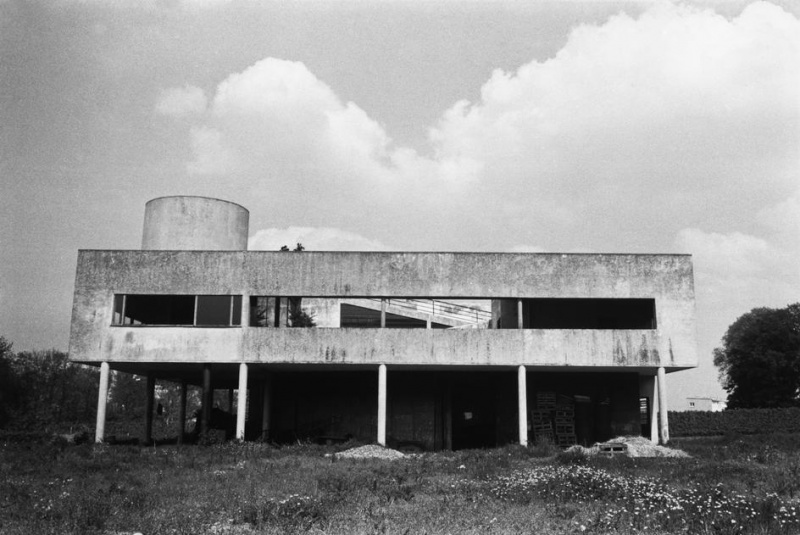
But let's take a side step: do you remember Villa Savoye? Of course, that very famous work by the great archistar Le Corbusier - born Charles-Édouard Jeanneret Gris - has become one of the archetypes of the modern villa (where "modern" means that International Style which has remained the same for 100 years while the architect disciples continue to copy and replicate each other). World paradigm, absolute and most sublime work in its beauty, defined as "a box" by its designer... and uninhabitable. Then we see why.
In the meantime, let's write it down big and fat, in case anyone missed it:
UNHINABITABLE.
We specify that the discussions on the Villa Savoye are totally elitist, as it has become a model exclusively for the suburban bourgeoisie of vacationers and for the salon discussions for architects with curled moustaches. I am not aware that it has contributed positively to the resolution of urban and social problems in 20th Century society. On the other hand, the concept that «what [modern man] needs is a well-lit and heated monk's cell, with an angle from which to contemplate the stars» is, in my opinion, the embryo of the "you will live in the pod". Leaving aside the irony about warming, in light of recent geopolitical events affecting energy supplies to Europe.
Continuing on the Villa Savoye, we recall the well-known programmatic points of LeC's architecture (compiled "scientifically", he assured): the house as a "machine for living", which was supposed to ensure «a shelter against the heat, the cold, the rain , the thieves, the indiscreet».
Well, if these minimum requirements, defined by the architect himself, were not met, we would have to admit that this is a failed project. A beautiful sculpture, perhaps, certainly a bad architecture.
Well, if these minimum requirements, defined by the architect himself, were not met, we would have to admit that this is a failed project. A beautiful sculpture, perhaps, certainly a bad architecture.
Who better to provide an account of the comfort and performance guaranteed by this machine for living, if not its owners and inhabitants? Otherwise it would be interesting to understand why their opinion should worth less than some by-passer visiting the "new" villa (after three radical restorations it's problems have been hopefully solved...) expressing himself by saying "how nice" .
Yes, I'm talking to you, you know it's you.
Yes, I'm talking to you, you know it's you.
Not to mention the ideological ferocity of the architect, who reacted with horror to Madame Savoye's desire to furnish the living room with...an armchair and two sofas («Nowadays domestic life is characterized by the deplorable idea that we need furniture. This concept it should be eradicated and replaced by that of equipment»). Do you also smell this scent of progress, of TINA (There Is No Alternative), of moralisation, of education of the uncultured masses, now so widespread? It took shape with these people here. Do you perhaps notice any differences between this attitude and that of Soviet modernism, where the architect decided basing on the parameter of the non-existent "average man" the exact location of the "equipment" without the possibility of modification?
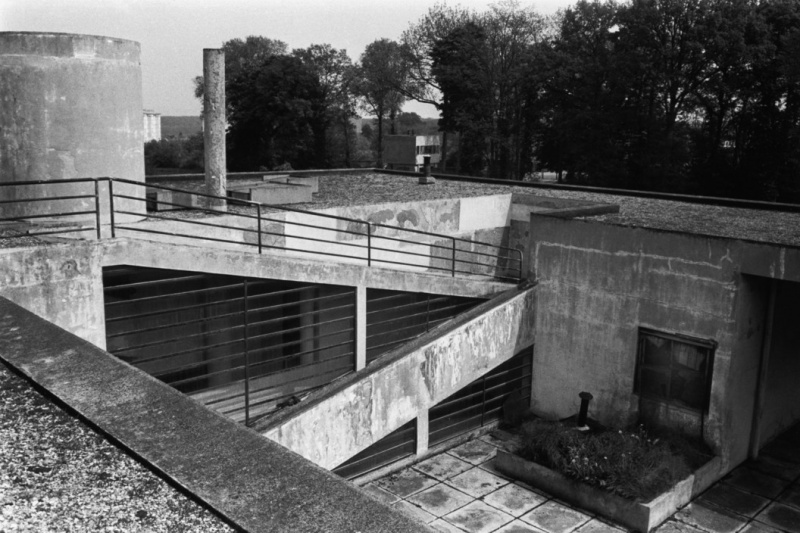
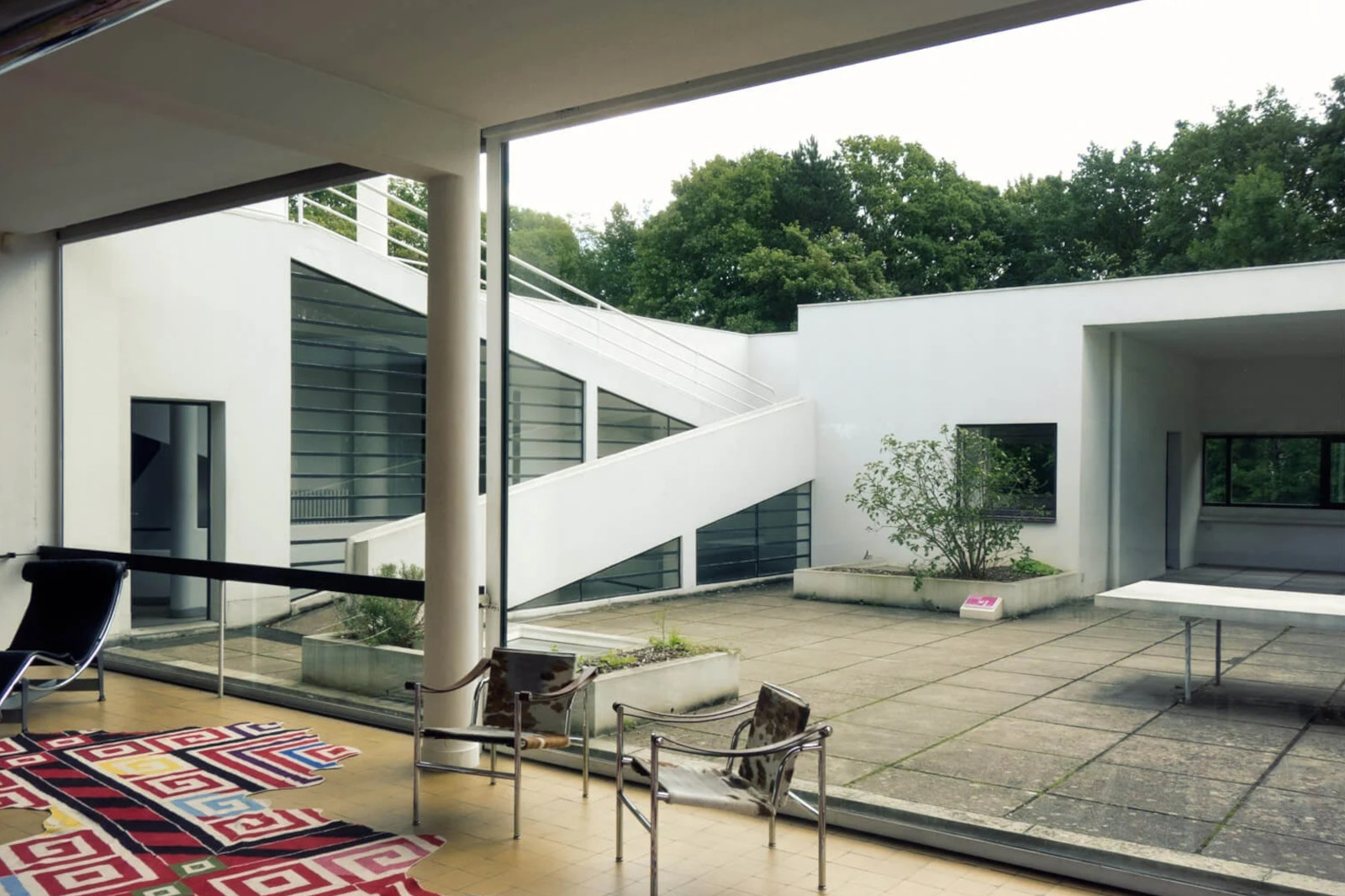
The problems that make the Villa Savoye a solemn failure are written in black and white in the damp-shrivelled letters that the enraged Madame Savoye continually sent to the architect:
The budget was out of control, as is often the case with buildings "that must be iconic", but this did not prevent the most trivial construction and comfort errors.
A week after moving in, a crack formed in Roger's room, the son of the couple, from which so much water leaked in that the young man was forced to spend a year in a sanatorium: extremely ironic if one thinks of the scientific premises of the building, such as its pretension to be a machine modeled around healthcare and tuberculosis prevention. Although it is not unequivocally proven that the Villa caused the boy tuberculosis —as authors such as A. de Botton seem to imply- the fact that he spent a year in the sanatorium to recover and not in the Villa logically indicates that it was not fit for that purpose! As always happens, there is some midwit who has participated in half a lesson at school and has missed a part. Plus, he forgot to wear the Humility Hat before going out home in the morning.
A week after moving in, a crack formed in Roger's room, the son of the couple, from which so much water leaked in that the young man was forced to spend a year in a sanatorium: extremely ironic if one thinks of the scientific premises of the building, such as its pretension to be a machine modeled around healthcare and tuberculosis prevention. Although it is not unequivocally proven that the Villa caused the boy tuberculosis —as authors such as A. de Botton seem to imply- the fact that he spent a year in the sanatorium to recover and not in the Villa logically indicates that it was not fit for that purpose! As always happens, there is some midwit who has participated in half a lesson at school and has missed a part. Plus, he forgot to wear the Humility Hat before going out home in the morning.

...of course, in fact...
«It is raining in the hall, it’s raining on the ramp and the wall of the garage is absolutely soaked [...] It is still raining in my bathroom, which floods in bad weather, as the water comes in through the skylight. The gardener’s walls are also wet through.»
The architect hesitated and, rightfully, received a polite "we wouldn't want to get the lawyers involved":
«After innumerable demands, you have finally accepted that the house you built-in 1929 is uninhabitable. It is your responsibility and I should not pay for it. Please render it inhabitable immediately. I sincerely hope that I will not have to take recourse to legal action.»
One thing that no one has ever been able to explain was LeC's choice of wooden frames for the ribbon windows, which caused drafts and infiltrations due to the thermal adjustments of such large and continuous frames.
The ample skylight in the bedroom, for one, made a driving rain noise that prevented the owners from sleeping (ah, if only he had stolen some skylight solutions from Victor Horta!)
Other incomprehensible choices by Le Corbusier that would make any student fail remain a mystery, as we said at the beginning:
- The orientation of the building is totally irrational and counterintuitive with respect to the functions;
- Insufficient heating, poorly positioned according to the state of the art;
- Constant water leaks through various cracks and drafts, and the roof (which, we recall, according to "international" dogmas must be flat and preferably without overhangs). This despite LeC's assurances that it would be cheaper, more functional and easier to maintain;
- The excessive glazed surface and the used materials gave the building a non-existent thermal inertia, transforming it alternatively into a greenhouse or a cold room.
Anyone who knows me well knows that I'm a bit of a metalhead, but I don't disdain Rap either, see?
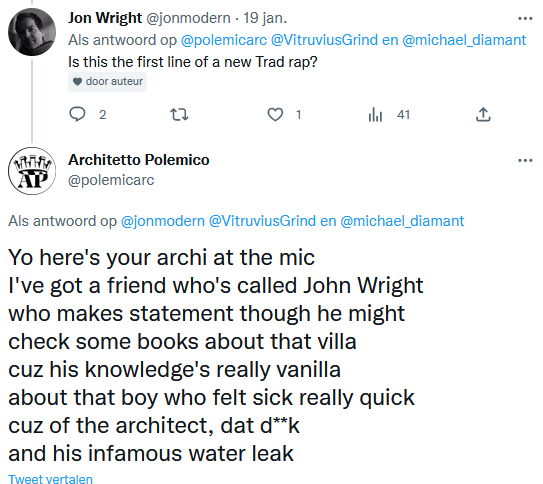
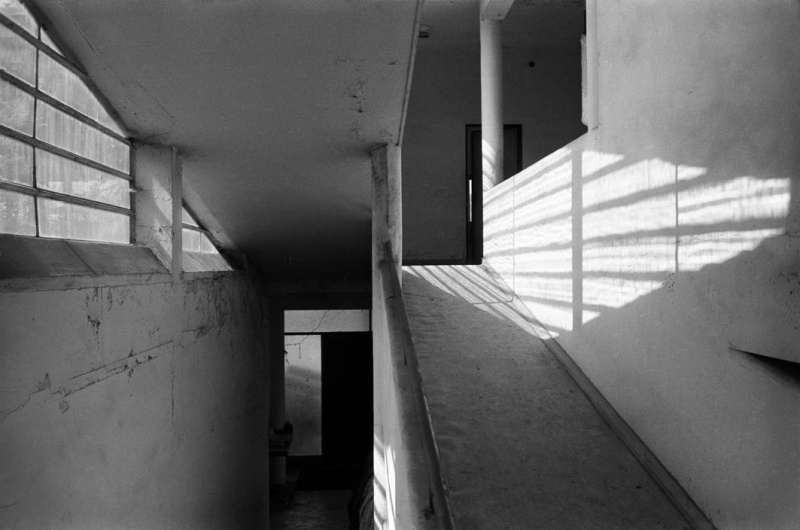
But how was it possible that an uninhabitable and faulty house became the paradigm of thousands of clones of "architects"? A little more detail below:
The order arrives at LeC and his cousin (yes, the cousin that nobody thanks!) in 1928, the works begin in '29 and the house is ready in '31. Breaking every record, as early as '32 the owners and clients fled at the speed of light throwing curses against the "genius" and "masterpiece", and this meanwhile the photos of the villa were featured in all the glamorous magazines.
This alone would be enough to give rise to some doubts and to decree the disgrace of the project but, since it contained an innovative program of recent and at the time interesting ideas, many are willing to overlook all the shortcomings of the building —denounced by Mrs. Savoye in a intense correspondence with the architect, as we have seen- to elevate it to a great and eternal archetype. A slight idealization that does not correspond to reality and is typical for "moderns".
This alone would be enough to give rise to some doubts and to decree the disgrace of the project but, since it contained an innovative program of recent and at the time interesting ideas, many are willing to overlook all the shortcomings of the building —denounced by Mrs. Savoye in a intense correspondence with the architect, as we have seen- to elevate it to a great and eternal archetype. A slight idealization that does not correspond to reality and is typical for "moderns".
Our LeC, as told in various biographies. knew from the construction site manager that his was technically a hovel disguised as a villa, but he also knew that image and marketing have great power, and that great fortunes can be built through it. The stakes were very high: to create a manifesto that summarized all the work of his predecessors from Loos onwards, to launch the "new" architecture (already 20 years old in reality) under his signature. The life of the paying clients and inhabitants was the least of the problems.
Beware: it is right and this is the case, that the archetype is considered as such and that it is given due importance. But if a house doesn't work, it doesn't allow internal well-being or even living in it, ladies and gentlemen, there's not much to discuss: it's a bad project. Let's repeat it. A sculpture, a prototype, an attempt, call it what you like, but it's not a good architectural project, it's not a good building. It certainly has some interesting aspects, others disturbing, others controversial, but an architectural point of view cannot disregard the good ...functional functioning of the building, conceived among other things as «a machine for living in». It was actually the demo version with several bugs fixed in various subsequent releases. And not quite. Like Windows, in short.
Beware: it is right and this is the case, that the archetype is considered as such and that it is given due importance. But if a house doesn't work, it doesn't allow internal well-being or even living in it, ladies and gentlemen, there's not much to discuss: it's a bad project. Let's repeat it. A sculpture, a prototype, an attempt, call it what you like, but it's not a good architectural project, it's not a good building. It certainly has some interesting aspects, others disturbing, others controversial, but an architectural point of view cannot disregard the good ...functional functioning of the building, conceived among other things as «a machine for living in». It was actually the demo version with several bugs fixed in various subsequent releases. And not quite. Like Windows, in short.
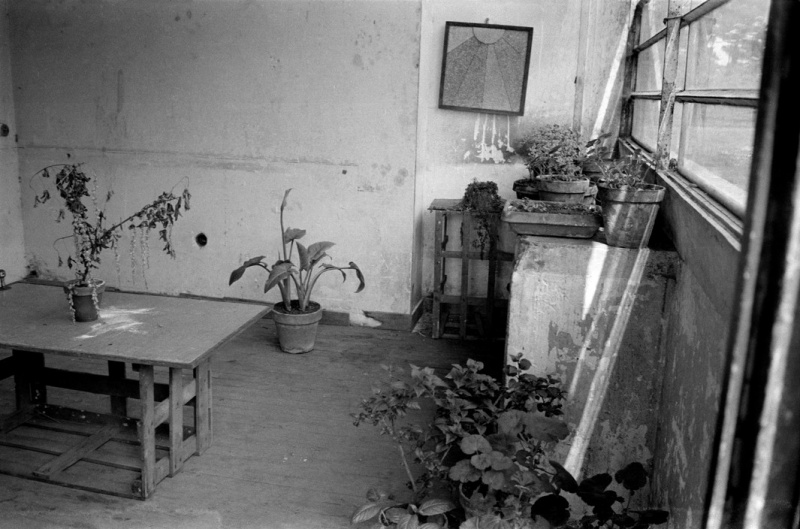
According to the research of the authors Susanna Caccia and Carlo Olmo, our LeC worked hard with the then French Minister of Culture André Malraux to have what was already a ruin restored with public money, not even 15 years after its construction. A great thought given that a formal notice from the Savoye was hanging over him which, if transformed into a legal dispute, would have framed him to pay a large compensation of 80,000 Dollars out of his own pocket at the time. Thanks to an international network of supporters, he manages to get the claim of his product across, adequately hitting the target. This is how dear Corbu was designated by the public authorities for the restoration of his own building in 1959, and finally gets the opportunity to swap the cards on the table by correcting various design errors (avec nonchalance, ça va sans dire), directing the works personally until 1965, the year of his death.
Other restorations took place in 1985 -20 years later- and in 1997 -twelve years after the second one- which indicate problems of durability and functionality of the "machine for living in".
Other restorations took place in 1985 -20 years later- and in 1997 -twelve years after the second one- which indicate problems of durability and functionality of the "machine for living in".
You read that right: the great icon of architecture is a myth built ex-post through marketing around the cult of the architect's personality and the wallet of the Savoyes, while LeC corrected his experiments gradually. Corbu knew it was "one of those projects" (architect friends will understand) and, like a new Palladio, he set about adapting his project afterwards. Except that Palladio triumphed in the restoration of the Palazzo della Ragione transforming it into an archetype, while LeC triumphed in having his archetype restored by the public money of future generations.
You have a lot to parrot «Repeat with me, Villa Savoye...Andrea Palladio».

"Time" wrote a revealing review of the building in 1935 with ill-concealed irony:
«Through the great expanses that he favors may occasionally turn his rooms into hothouses, his flat roofs may leak and his plans may be wasteful of space, it was Architect Le Corbusier who in 1923 put the entire philosophy of modern architecture into a single sentence "A house is a machine to live in"».
In the end it is this: a bad building -which among other things sometimes contradicts the dogmas of the "international style" such as the volumes placed on the roof as if on a platter- unlivable and unhealthy, however with two other fundamental characteristics: the stylistically innovative image, which nowadays smells stale but which directly influenced the collective imagination, and the political ideology encompassing the projects of more then half a century. This last aspect is fundamental in describing the phenomenology of technocracy in architecture and blatantly manifests itself in the concept of "living machine" built around the car (and not the person!), which defines the fundamental parameters of the project as explicitly stated by the architect. These two features have taken root in "international" building practice, in people's cultural and aesthetic horizons, in urban planning policies and are still alive today. A tragedy.
This is why I say that an admirer of the Villa Savoye is an admirer of the values and vision of the human being that it brings with it. Regular readers of this site, on the other hand, will be familiar with the values that @Polemicarc ascribes to the Art of Building.
This is why I say that an admirer of the Villa Savoye is an admirer of the values and vision of the human being that it brings with it. Regular readers of this site, on the other hand, will be familiar with the values that @Polemicarc ascribes to the Art of Building.
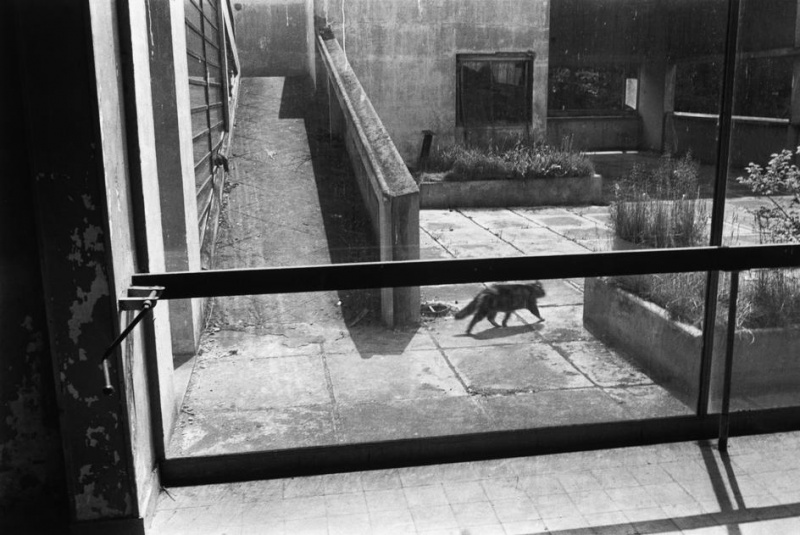
This post could be over.
BUT.
At this point you are probably wondering why the title of this post is "Mubarak's nephew", and what it has to do with architecture or the Villa Savoye. It is soon said.
Do you remember the story of Mubarak's nephew? For foreign friends, I'll summarize: there was this gentleman, an elderly billionaire and sex addict, who was once caught frequenting a ring of prostitutes, and it turned out that one of these was a minor. Since by chance he was also the prime minister, and therefore headed a parliamentary majority, he had a brilliant idea: to get parliament to vote on a resolution stating that this girl was the nephew of none other than Mubarak, the then Egyptian president. Obviously his majority responded solidly to the call and, magically, the Moroccan prostitute became the nephew of the Egyptian head of state ex lege. This was to be able to take advantage of various quibbles related to diplomatic immunity. if I remember correctly. The power of voting!

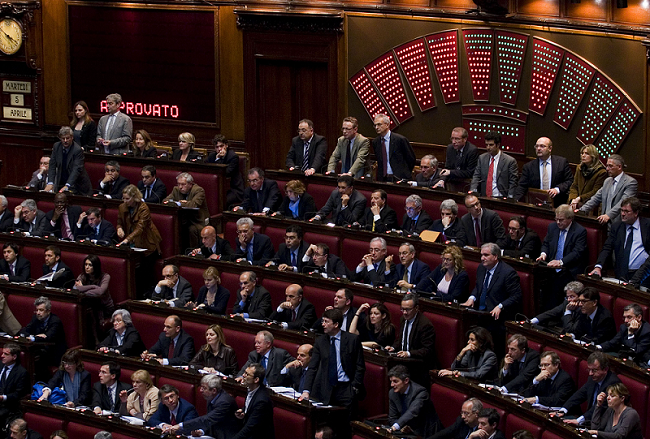

There's some "architect" on Twatter who started doing the same thing: organizing the poll among his friends who decreed by popular acclaim and without appeal that "Villa Savoye is beautiful" (and therefore ...hummm... a good project).
He is an interesting (b)rat, who gives a psycho-zoological glimpse which I would like to underline as representative of the cultural degradation of the so-called post-modernity (side note for the pseudo-educated: "postmodernity" is not "that thing that Robert Venturi invented" as some runaways may believe having attended half a lesson in the History of Architecture course, but that much broader concept faced by by-passers like Fukuyama, Derrida or Bauman, of which the postmodern style in architecture is, if anything, a symptom of the postmodern history. In short, rookies who notoriously wandered in terminological confusion).
If anything, it is a question of adequately placing the functionalist archetype of the Corbusian machine and its winking aesthetic compensation in the evolution of dystopian architecture which is rapidly taking the forms of the smart city, the tiny house, domotics, etc.
He is an interesting (b)rat, who gives a psycho-zoological glimpse which I would like to underline as representative of the cultural degradation of the so-called post-modernity (side note for the pseudo-educated: "postmodernity" is not "that thing that Robert Venturi invented" as some runaways may believe having attended half a lesson in the History of Architecture course, but that much broader concept faced by by-passers like Fukuyama, Derrida or Bauman, of which the postmodern style in architecture is, if anything, a symptom of the postmodern history. In short, rookies who notoriously wandered in terminological confusion).
If anything, it is a question of adequately placing the functionalist archetype of the Corbusian machine and its winking aesthetic compensation in the evolution of dystopian architecture which is rapidly taking the forms of the smart city, the tiny house, domotics, etc.
On the other hand, what do you expect from someone who, if I say «People do not like Villa Savoye, only a few architects do», starts thinking that I, an architect, imply that "architects are not people"...and even makes a survey on it, in which he and other "intellectuals" French-kiss each other?
As for its UNESCO listing, I would like to remind the reader that UNESCO is purely a political organization in which the assembly reaches an agreement upon voting after talks between the countries and the one proposing to list its own "thing". Basically your country could lobby virtually anything in it, as you can see here.
However, do not think that I would like to cancel poor Villa Savoye: it is a historical monument to the arrogance of international "modernism" and everyone sees what they want in it: lessons to be learned in history and humility, or the non plus ultra from which to draw inspiration. Today we see the results of the two approaches, because Architecture IS Politics.
Sources:
Architecture and Happiness (A. de Botton)
Architecture and Happiness (A. de Botton)
Le Corbusier: La Villa Savoye (Jacques Sbriglio)
The Villas of Le Corbusier 1920 1930 (Tim Benton)
La Villa Savoye. Icona, rovina e restauro (Susanna Caccia, Carlo Olmo)
PS:
The unsatisfied "friend" continues to outfit his pearls of wisdom. It will be necessary to create a page dedicated to him. In the meantime, we'll put them here, since he's so proud of his Ammmmmeregan Campus Culture:
The unsatisfied "friend" continues to outfit his pearls of wisdom. It will be necessary to create a page dedicated to him. In the meantime, we'll put them here, since he's so proud of his Ammmmmeregan Campus Culture:
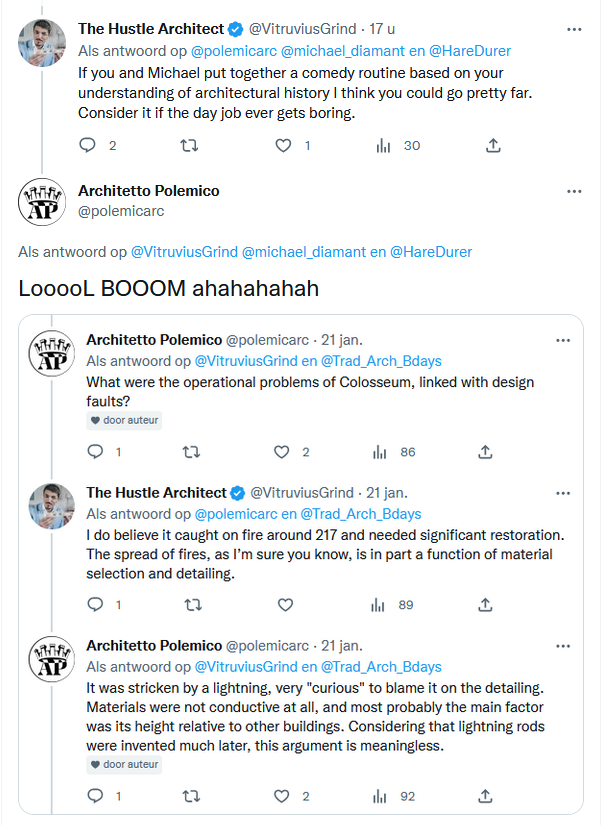
Voilà, we are truly done. Let's not give too much exposure to the clowns on the Web.
Posted: 24/01/2023 07:15 — Author(s): Polemicarc
x
Responses
No responses yet ...
Be the first to write a response. ↴